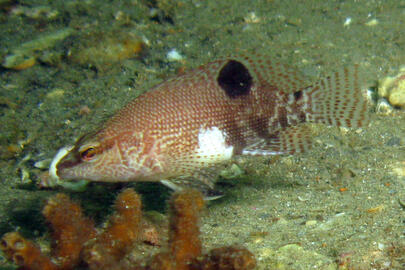

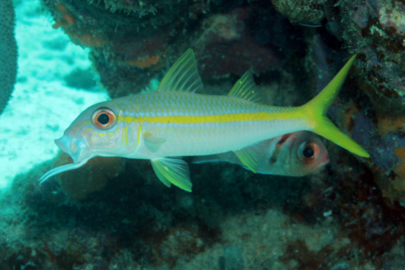
White; upper body may have shadings ranging from blue to olive or red. Fins, other than tail, may be white or yellowish.
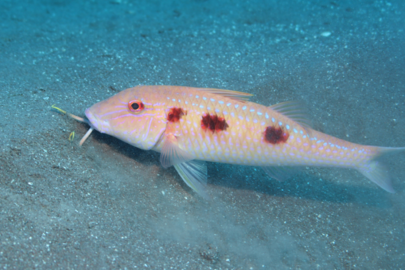
Rapidly and dramatically change color from white to blotched and mottled red to reddish brown when becoming inactive. Light bluish lines often on head and, occasionally, upper body.
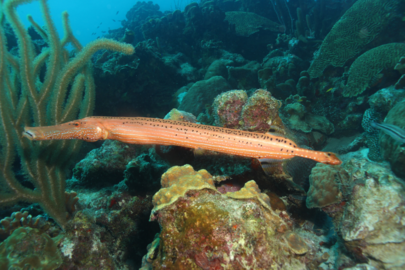
Adept at color change. Most common phase is brown to reddish brown; can be blue-gray, bright yellow or many shades between. Have pale lines, scattered small black spots, and a black streak on upper jaw.
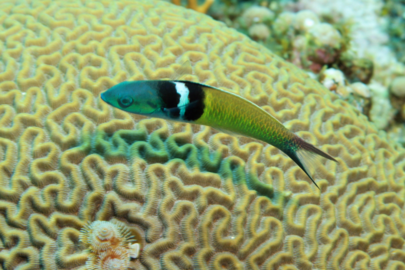
Rear body is green to blue-green.
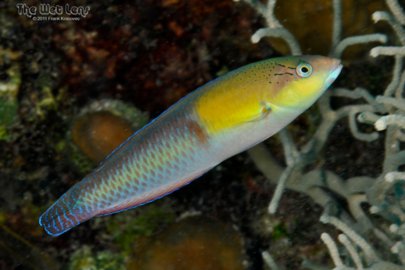
Head and forebody vary from bright yellow to yellowish or greenish tan; dark blue to green rear body and tail. Dark midbody bar continues as a wide border along back to tail.

Greenish overall, underside lighter; anal fin usually reddish. Outer tips of tail black. Tail square-cut.
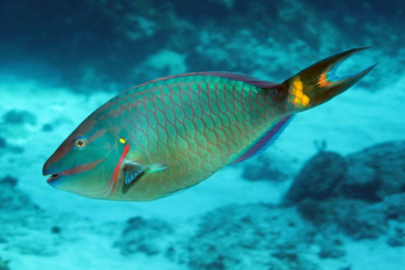
Emerald green. Salmon to yellow markings on head and fins. Tail is crescent-shaped.
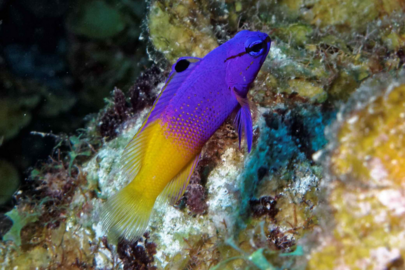
Several streaks on head run across eye.
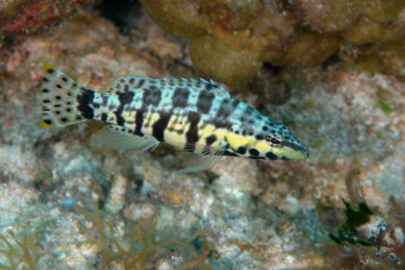
Upper body has whitish undercolor; lower body pale yellow. Series of dark dots form diffuse horizontal lines on body. Head more pointed than that of other family members.
